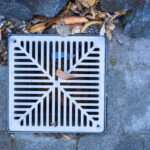When it comes to car maintenance, achieving that glistening showroom shine is often seen as a pinnacle of vehicle aesthetics. For enthusiasts and everyday drivers alike, the gleam of a freshly polished car is not just about vanity but a testament to meticulous upkeep. If you’re looking to revitalise your vehicle’s appearance, a cut and polish is a quintessential service that can restore your car’s lustre and address a myriad of surface imperfections. In this comprehensive guide, we explore the ins and outs of this process and how best to achieve sublime results for your vehicle.
Understanding Cut and Polish
The term ‘cut and polish’ describes a two-stage detailing process that involves the removal of a fine layer of paint from a vehicle’s exterior to eliminate scratches and blemishes, followed by polishing to enhance the shine and protect the paintwork. While seemingly straightforward, this procedure marries art with technique and requires a certain finesse to ensure a flawless finish.
The Cutting Stage
The cutting, or compounding stage, leverages abrasive compounds that work to level out the paint surface by eliminating a microscopic layer of the clear coat or paint. This is essential for smoothing out scratches, swirl marks, and oxidation that contribute to a dulled appearance. Patience and precision during this stage are critical; an even cut across the vehicle ensures uniformity in gloss and colour.
The Polishing Stage
Following the cut, the polishing stage utilises less abrasive products to refine the finish and bring out a vivid shine. Polishing helps to bridge the gap between restoring the paint’s health and enhancing its aesthetic appeal. It is also vital for sealing in the work done during the cutting stage, providing an added layer of protection against environmental elements.
Tools and Products
For a professional cut and polish, specific tools and products are necessary. High-quality buffers or dual-action polishers, a range of cutting pads, polishes, and waxes, alongside microfiber towels, constitute the arsenal required for this task. The selection of compounds is crucial, as different levels of abrasiveness are needed depending on the extent of damage and the type of paint on the vehicle.
Determining the Need for a Cut and Polish
Not every car requires a cut and polish. It’s generally reserved for vehicles exhibiting significant signs of wear or those anticipating a special occasion. For example, cars with paint dulled by years of sun exposure, or those with visible swirl marks from improper washing techniques, stand to benefit immensely from this process.
DIY vs Professional Services
While the cut and polish procedure can be undertaken as a DIY project, it demands a solid understanding of the process and a gentle hand. Mistakes can lead to uneven finishes or, worse, irreversible damage to the paintwork. Thus, seeking professional services can often be the prudent choice, especially for those new to car detailing or possessing high-value vehicles.
Preparing for a Cut and Polish
Preparation plays a pivotal role in the success of a cut and polish. Car surfaces must be impeccably clean before commencing this detailing service. A thorough wash, followed by decontamination to remove any bonded surface impurities, sets the stage for a flawless cut and polish application.
Executing the Cut and Polish Methodically
Proficiency in the cut and polish technique requires methodical application. Detailers start with the most abrasive compound needed to tackle the deepest scratches and gradually work their way down to finer polishes. This step-wise approach avoids over-cutting and maintains the integrity of the car’s paint.
Assessing Progress During the Process
Continual assessment throughout the process is essential. Between stages, detailers must inspect the work under various lighting conditions to ensure that defects are being appropriately addressed without creating new issues.
Maintaining Results Post Cut and Polish
Following a cut and polish, maintaining the vehicle’s shine requires regular washing, the use of wax or sealants for protection, and mindful habits to minimise the reintroduction of scratches or damage. Sustaining the finish also involves limiting exposure to harsh environmental elements where possible.
The Outcome of a Quality Cut and Polish
A successful cut and polish culminates in a finish that rivals that of a brand-new car, enhancing not only the aesthetics but also potentially the resale value of the vehicle. This high-quality result reflects the proficiency of the detailing process and the careful selection of products and equipment used throughout.
Conclusion
Achieving a showroom shine through cut and polish is an accessible goal for car owners who appreciate the value of a well-maintained vehicle. Whether opting to take on the task personally or leaving it to professionals, understanding the intricacies of this service can inform expectations and guarantee satisfaction with the end result. With meticulous care and attention to detail, your car can sport a captivating polish that makes heads turn.
In conclusion, a cut and polish is much more than a simple cosmetic uplift; it is a detailed process that rejuvenates the paintwork and showcases the vehicle in its finest form. When done correctly, it underscores the importance of comprehensive car maintenance and the wonders it can do for your precious ride.



